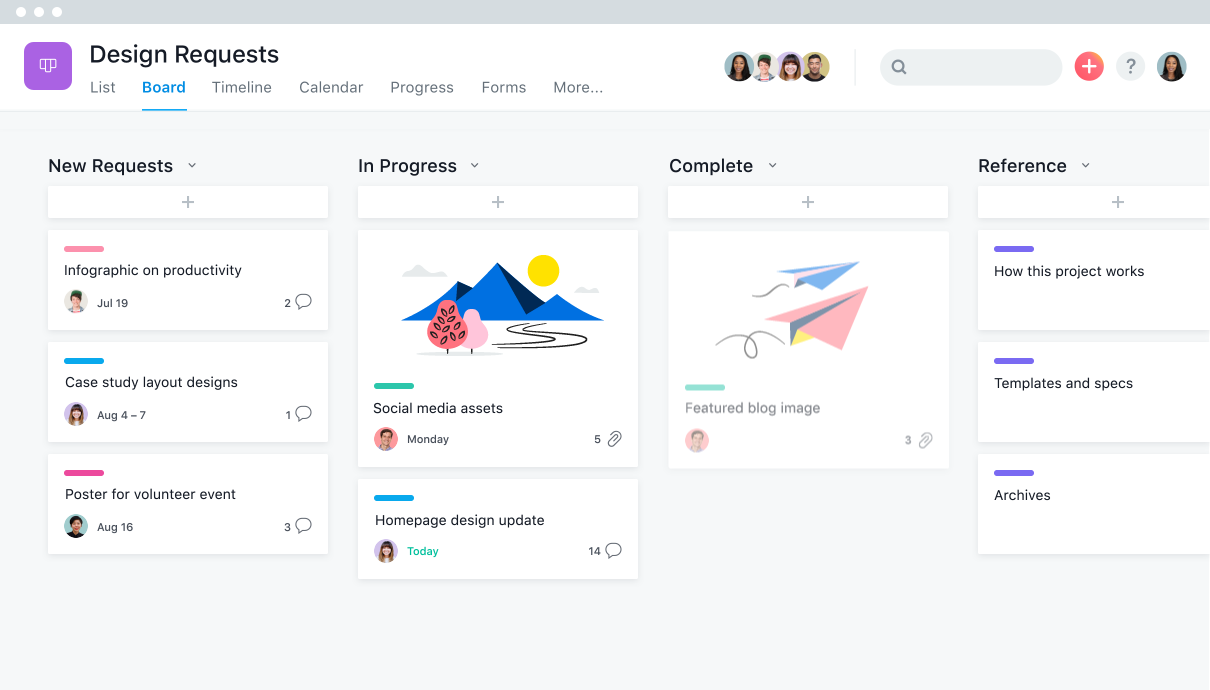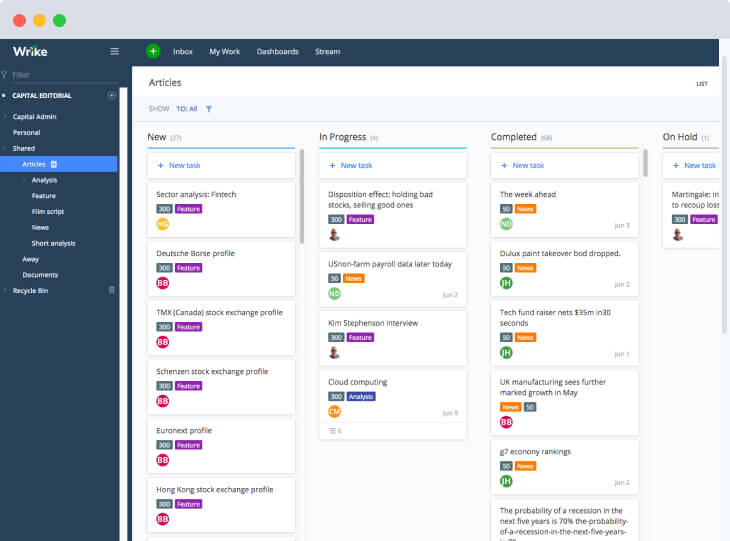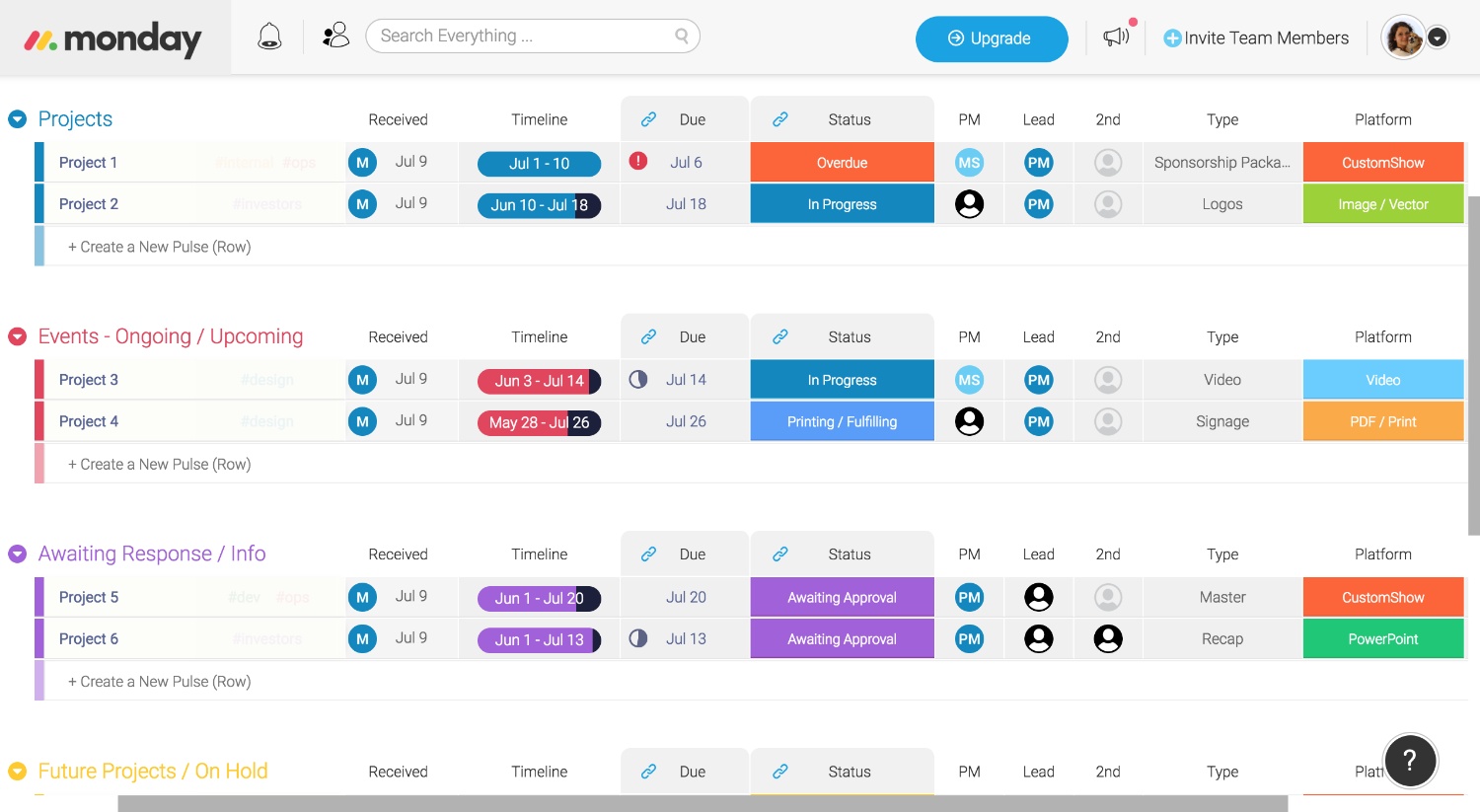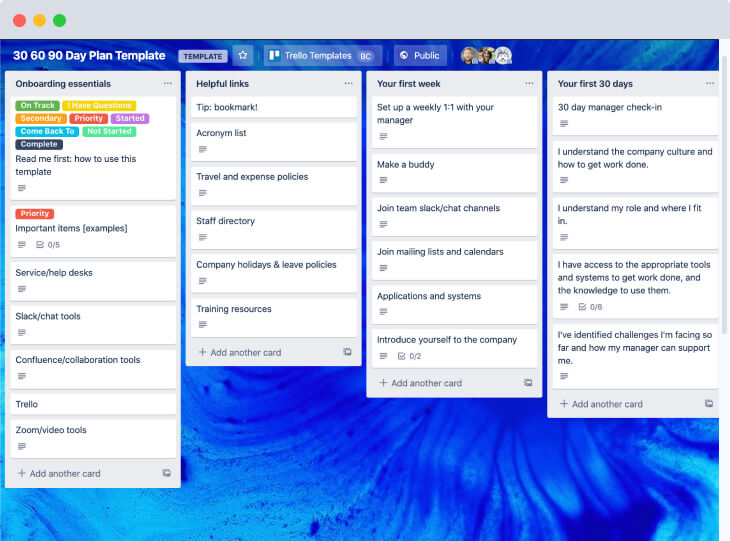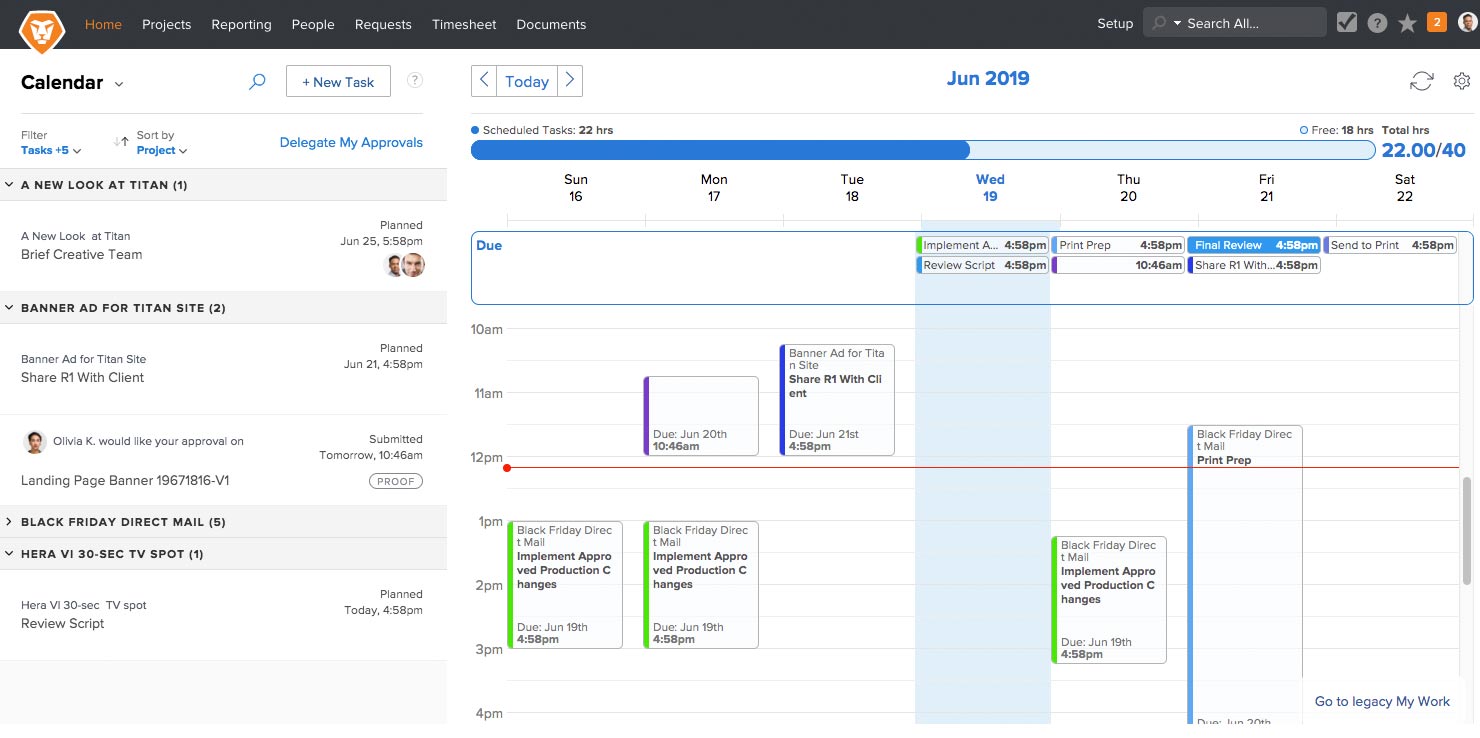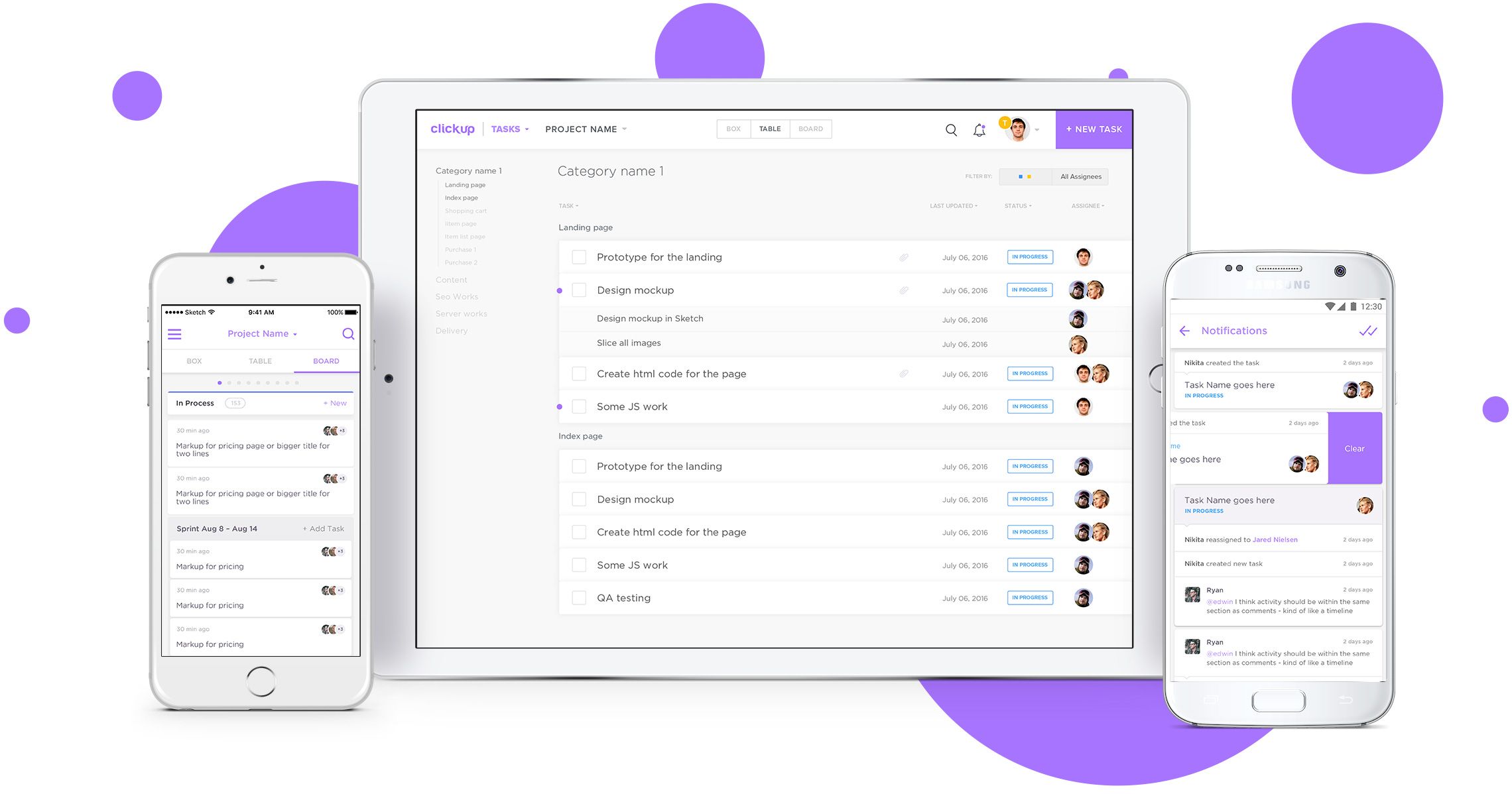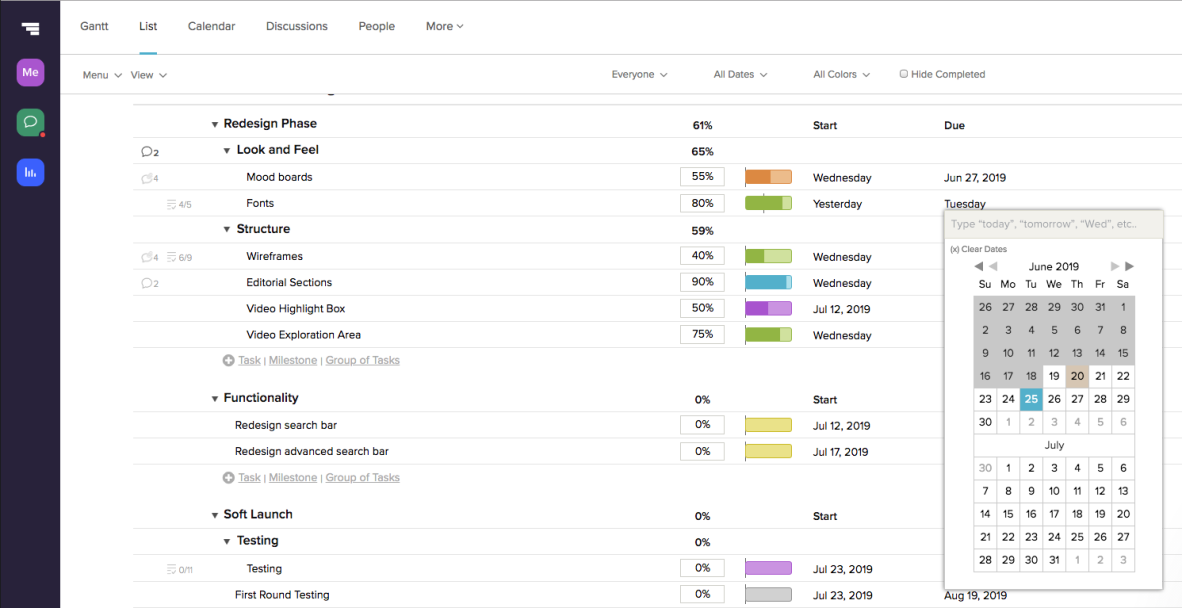Just a decade ago, project management tools were at its rarest. Only the prominent leaders could afford to take advantage of the features such tools had to offer. However, time flies, and the demand for PM applications increases substantially, causing more and more tools to appear. Today, there are virtually no limitations – you get to choose among numerous platforms that are suitable for both small and midsize businesses and organizations.
One such tool that firmly takes the lead in the 2020 market is Asana. It’s a project management tool that can track progress, let you view all the current projects, and allow communication with employees. It certainly deserves all the praise; however, several competitors can give Asana a run for its money. We’ve prepared quite a few of them to make sure at least one will become your perfect choice.
But before we dive into a list of our Asana alternatives, it would be fair to mention some background information about the tool.
What is Asana?
As we’ve said above, Asana is a workflow management tool that lets you focus on business goals and objectives rather than spending hours doing repetitive daily tasks. Moreover, with Asana, you can set priorities and deadlines and share important details all in one place. They say their product empowers the team to produce great results, and we couldn’t agree more. Its list of customers speaks louder than words. Such big names as Nasa, Vodafone, Google, The New York Times, Uber, and others trusted their project management to Asana.

What Asana has to offer
We could talk about all the ways Asana can ease and speed up your normal workflow for hours, but no one has that much extra time to spare. That’s why we will be focusing on Asana’s most prominent features that are worthy of your attention:
Project management
If you are fed up with spreadsheets, then you will probably like the way Asana visualizes its tasks in boards, lists, timelines, and calendars. Additionally, you can use the ‘Files View’ option to look at all project attachments in a single place. Such a structure allows your team members to track the progress of the current projects easily. Also, with Asana, you can organize your work into shared projects or break complex issues into more manageable tasks. The best thing about it is that you’re not imposed on any regulations, and you can choose the interface to work with.
Task management
Apart from standard options like conducting tasks assigning or setting due dates, you can also create dependencies and sync tasks across the projects. Furthermore, you get to streamline your approvals process and avoid the mess by keeping tasks organized in sections. There’s even more to that. You can easily invite not only people from your team but also external users to help you manage specific tasks. Pretty impressive, isn’t it?
Views and reporting
Asana took reporting to a new level. With its timeline and workload features, you can get a real-time overview of how busy your team members are. It gives you a picture of your team’s capacity. Portfolios will provide detailed information on each project, including progress bars, color-coded priority, and status.
Custom fields
You can get more clarity about your team’s work with the help of custom fields. Track information that is most important to your company by creating a field for stage, priority, or cost.
Workload and timeline features
Make sure that no one on your team has an extra amount of work. The workload management feature works both ways, meaning you can also balance the workload for those underworking. Tasks can be reassigned by simply using the drag-and-drop feature. To execute the Timeline feature, create a detailed project plan with a due date for each and forget what missing a deadline is.
Pricing
Asana has four pricing plans, starting with a free Basic plan and ending with an Enterprise one. The price of each plan should be discussed individually.
Basic(free) For individuals, students, and freelancers
| Premium($10,99) For team leads looking to manage projects | Business($24,99) For organization leaders looking to manage work across initiatives | Enterprise(discussed for each individual case) For executives and IT teams looking for advanced security features |
Manage tasks and personal to-dos:
| Track team projects with features and resources like:
| Everything in Premium, plus:
| Everything in Business, plus:
|
Available as a cloud app on all browsers, Windows and Linux desktop apps, and mobile apps on iOS and Android.
Supported languages: English, French, German, Spanish, and Portuguese.
Asana alternatives
Now that we’ve mentioned the most essential features, it’s time to switch to the best Asana alternatives.
Wrike
Wrike is a project management tool built with ease and efficiency in mind. It is very flexible regarding project planning and streamlining the workflow. An extremely user-friendly interface and quick setup make Wrike the perfect choice for everyone who is fed up with overcomplexity.
Wrike’s most prominent features include:
- Customizable dashboards and shared calendars that can be automatically linked to different teams
- Multiple views
- Proofing and approval features for faster review of images, videos and PDF files
- Gantt charts to visualize dependencies and deadlines
- Kanban boards with a complete view of tasks and their prioritization
- Advanced reports
Moreover, Wrike has collaboration software, which allows different team members to discuss subject-related matters within the context of their work. Real-time @mentions help to bring special attention to specific issues and, as a consequence, resolve them faster. With Wrike, you don’t have to worry about looking for another project management tool with updated features, as the software is highly adjustable and flexible.
Additionally, this project management software offers a built-in time tracking tool, which is ideal for basic time logs and reporting. Mind that this sharable time tracking cannot substitute a dedicated and comprehensive time tracking system.
When it comes to pricing, Wrike and Asana are almost hand-in-hand. The competition is vital since you get an unlimited number of projects for free. So, it all comes down to the user’s personal preferences about the features they would like to have in their future project management software.
Supported languages: English, French, German, Italian, Japanese, Portuguese (Brazilian), Russian, Simplified Chinese, Korean, Spanish, and Polish (user-translated).
monday.com
monday.com is a cloud-based tool and an online team collaboration project management system designed to give users a flexible way to organize their work. monday.com helps your team approach new projects with ease and efficiency. A lot depends on how everything is organized, and monday.com is all about allowing you to create your ideal workspace from the list of premade templates. For example, when creating a project table, you can add different column types, such as timeline, color-coded status, checkbox, progress tracking, star rating, and more!
monday.com's most prominent features:
- Different boards for better structuring of the information
- Code-free automation
- Multiple views, including workloads, timelines, dashboards, charts, calendars and map
- 50+ integrations with various apps to streamline your standard workflow
monday.com is excellent for any collaborations since most of the data, like conversations, files, checklists, and spreadsheets, is stored in one place. You may work together with clients or vendors outside your team, with limited access to shareable files, without the need to have long meetings or long and confusing email threads. Everything is very accessible and transparent; that’s why we love monday.com.
The price tag you will pay on Monday.com depends on the number of users you have, which makes it confusing to calculate things at first. Like in Asana, there are four tiers of service to choose from: Basic, Standard, Pro, and Enterprise. No matter your choice, you’ll have to pay for monday.com through monthly or annual payments. We recommend checking their website for a detailed view of their pricing grid, but in general, the cost per person per month will start from $12.
Supported languages: English
Trello
Another great Asana alternative—Trello—is versatile project management software suitable for all purposes. Unlike the other big names on the market, Trello is extremely easy to set up—you can get it up and running in just a few hours. So, if you’re looking for software that will allow you to get started quickly, Trello is the answer. The interface is intuitive, which is beyond important for a tool of such a level.
Trello’s most prominent features:
- Notifications system to keep you up to date
- Real-time discussions system
- Splendid board system with unlimited cards and lists to manage the workload efficiently
- The voting feature enables the working staff to decide and vote on specific tasks in real time
- A ‘power-up’ feature that enables you to modify content on every board and add various integrations
- Wide range of apps for integration
With Trello, all your projects and tasks are organized in one unified system. The key metric here is a card. The card can contain a detailed checklist, file attachments, due dates, and more. On the dashboards, cards are easy to move between different stages of work, allowing everyone on the team to keep track of progress.
Regarding pricing, Trello probably has the best quality-to-price ratio on the market. Like the other PM tool we’ve mentioned above, Trello has a free tier with the possibility of unlimited cards, boards, and lists. Whether you pay or not to pay is certainly up to you, but bear in mind that the free plan is quite limited (obviously).
The supported languages are English, Portuguese, French, Spanish, German, Finnish, Norwegian, Swedish, Russian, Polish, Hungarian, Ukrainian, Czech, Dutch, Italian, Turkish, Thai, Japanese, Traditional Chinese, Simplified Chinese, and Vietnamese.
Workfront
Workfront is a modern cloud-based project and work management platform that helps individuals, as well as big enterprises, thrive in their businesses. With everything stored in one place, you can effortlessly manage complex processes and implement best practices. The tool’s automation makes it easy to turn new work requests into projects with just a few clicks.
Workfront’s most prominent features:
- Custom dashboards
- Efficient Work Breakdown Structure
- Portfolio Management
- Time-tracking and real-time metrics
- Project templates
- Approvals and Online proofing
Workfront has all the major features offered by other PM software, including the opportunity to share and manage documents for collaborations and real-time dashboards to track the status of ongoing projects and recognize employee achievements. However, what makes Workfront stand out is its Demand Management feature, which prioritizes tasks through automated request queues.
Workfront offers four pricing plans: Team, Pro (for one department), Business (up to 10 departments), and Enterprise. The website does not mention actual pricing, as they estimate everything for each individual case.
The supported languages are English, German, French, Spanish, Portuguese, Italian, Japanese, and Chinese (simplified and traditional).
ClickUp
One of the most highly rated alternatives to Asana is Clickup. It is a multi-purpose project management tool and collaboration software that can help you boost your overall productivity. When we say multi-purpose, we mean it. ClickUp can be a notepad that can record ideas for personal purposes or during meetings. Another unique feature of this software lies in its ability to serve for organizing events. As a project management tool, ClickUp allows us to manage tasks and make quick changes. With the People Sidebar, you can filter tasks related to specific people virtually in no time.
ClickUp’s most prominent features:
- Multiple customizable views: Teams, Spaces, Projects, Lists, Tasks, and Subtasks
- Filtering
- Checklist and team templates and task dependencies
- Draft tasks for the ideas that aren’t finished yet
- Bulk Rescheduling
- Agile Boards
With ClickUp, you can set priorities for the most critical tasks and ensure no deadlines are missed. This project management tool also has unique team reporting features, like Progress Percentage, to keep you up-to-date on how the work of specific projects advances.
ClickUp is great, but it seems to have too many features, which may confuse some people, especially if you’re just getting started with project management software. We suggest that you visit their official website to learn more insights about all the features so that you can use them to the fullest and prevent any possible confusion.
ClickUp also has four different price tiers, starting with the basic free plan and going up to the Enterprise plan, which includes advanced permissions, custom SAML and onboarding, and even a training program. Two out of four plans offer free trials.
Supported languages: English
Smartsheet
Smartsheet is an online project management software that can also be used for work execution and team collaboration. The tool is very flexible when planning projects, automating certain processes, and managing work. Smartsheet’s interface looks like a very advanced spreadsheet (hence the name).
Smartsheet’s most prominent features:
- Cell linking
- Alerts and Reminders
- Resource Management
- Notification Centre
- Card, Gantt, and Calendar View
- Proofing tool for progress supervision
- Portals to keep different teams on the same page
Even though we’ve mentioned that the platform looks like a spreadsheet, its features are among the best on the market—the high ratings say it all. With Smartsheet, you can automate repetitive processes and perform multiple actions simultaneously. Thanks to the visual timeline management and collaboration, projects take less time to resolve, which is a ‘must’ for businesses that value their time.
Smartsheet has a Critical Path feature allows us to see all the tasks that directly impact the project completion date. If you’re all about keeping things organized, the tool’s Activity Log will help you keep track of all activities and updates.
The software offers two major plans (Standard and Enterprise) and two sub-plans under each plan. However, the cheapest plan is pretty limited, so we suggest you take some time to decide on the options.
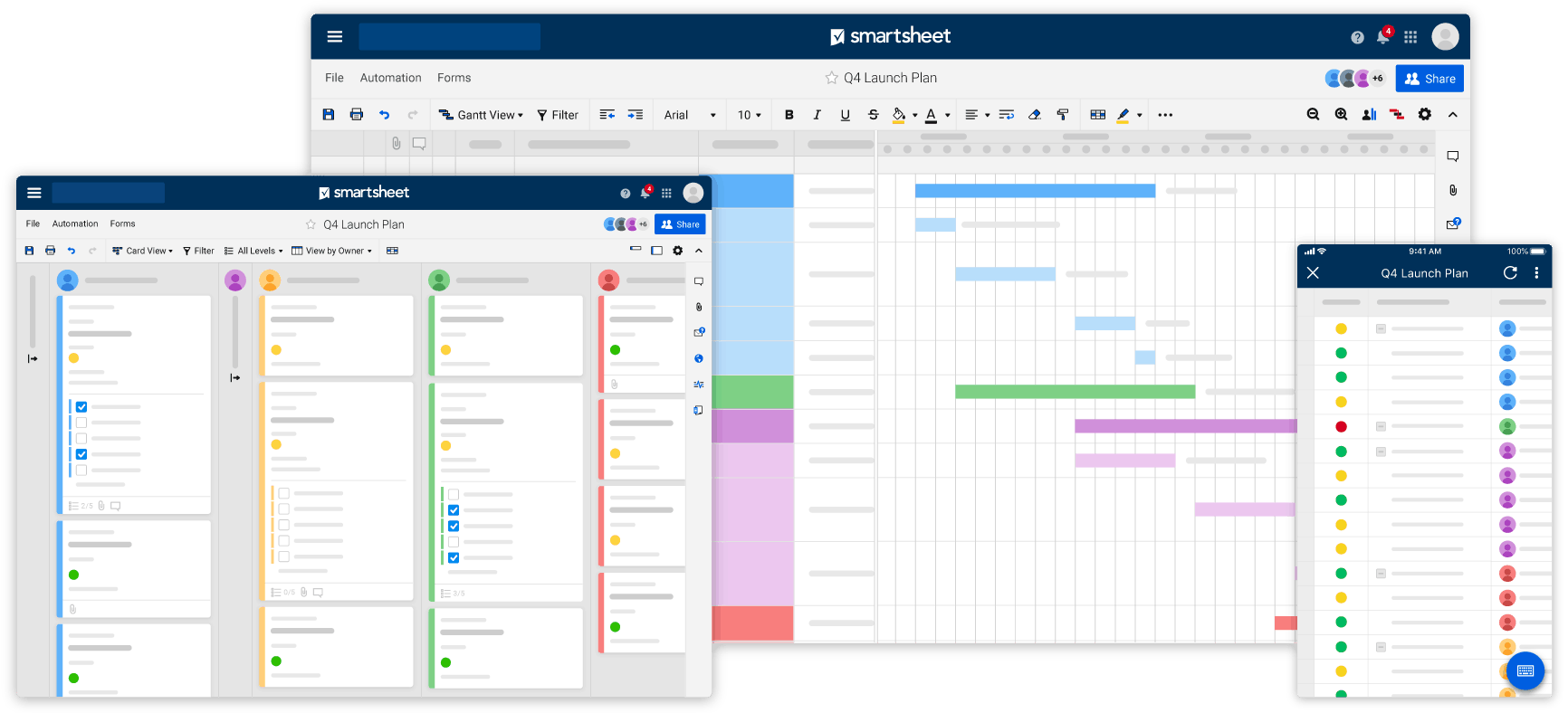
Source: smartsheet.com
Supported languages: English, German, French, Italian, Portuguese, Spanish, Russian, and Japanese.
TeamGantt
TeamGannt is cloud-based project management software with a prime focus on Gantt Charts. If you want to use Gantt charts not simply as a view option but as a full-on working space, then this one's for you. With TeamGantt, you can follow all tasks from their beginning to the full resolution and study the different dependencies between them. The tool is so intuitive that even people of all experience levels can set it up in less than an hour.
TeamGantt’s most prominent features:
- Task Ranking
- Release Forecasting
- Custom Workflows
- Time tracking
- Team scorecard
- Project map
- The drag-and-drop feature that allows creating tasks by dragging dates in a calendar
TeamGantt allows you to prioritize specific tasks and set time tracking for an entire team. The tool has some unique features that you can only find in a Gantt chart, like a Shared Team Calendar. It is one-place-for-all storage that shows the tasks’ entire duration from start to finish. This feature can help you work on time efficiency in the future. Also, with TeamGantt, users can filter tasks by due dates and assignees and convert any Gantt chart into a PDF file.
However, the tool is quite pricey, and it certainly won’t be suitable for smaller businesses. There are three plans – Free (for small projects of 3 people), Standard, and Advanced. Keep in mind that the free option is limited to a single project. The tool, however, offers free trial periods with no credit card required.
Supported languages: English
Future of Project Management Tools
Increased Focus on Artificial Intelligence and Predictive Analytics
Project management tools are increasingly incorporating artificial intelligence (AI) and predictive analytics to enhance decision-making and efficiency. AI can analyze past project data to predict potential risks and suggest optimal resource allocation, helping teams to proactively address issues and streamline their workflows.
Enhanced Integration with Emerging Technologies (e.g., VR/AR for Project Visualization)
Emerging technologies like virtual reality (VR) and augmented reality (AR) are being integrated into project management tools to offer innovative ways of visualizing and interacting with projects. These technologies can provide immersive experiences, enabling teams to visualize complex data and project progress in a more intuitive and engaging manner.
Greater Emphasis on Employee Well-being and Work-life Balance Features
Recognizing the importance of employee well-being, future project management tools will place a greater emphasis on features that support work-life balance. This includes tools for tracking workload, ensuring equitable task distribution, and providing insights into employee productivity and stress levels, helping to create a healthier and more sustainable work environment.
Improved Cross-platform Compatibility and Mobile-first Design
As the workforce becomes increasingly mobile, project management tools are being designed with improved cross-platform compatibility and a mobile-first approach. This ensures that users can access and manage their projects seamlessly across different devices, whether they are working from a desktop, tablet, or smartphone, thereby enhancing flexibility and productivity.
Integration of Project Management with Broader Business Intelligence Tools
Future project management solutions will integrate more deeply with broader business intelligence (BI) tools, allowing for comprehensive data analysis and reporting. This integration will enable teams to gain deeper insights into project performance, align project outcomes with business goals, and make data-driven decisions that drive organizational success.
Choosing the Right Tool: Factors to Consider
Team Size
- Small Teams (1-10 members): Trello, Asana, ClickUp
- Medium Teams (11-50 members): monday.com, Wrike, Smartsheet
- Large Teams (50+ members): Workfront, Asana (Enterprise), Wrike (Enterprise)
Industry-Specific Needs
- Marketing: Asana, Wrike, Trello
- Software Development: Jira (not mentioned in the original text, but worth considering), ClickUp, monday.com
- Construction: Smartsheet, TeamGantt
- Creative Agencies: monday.com, Asana, Trello
Budget Constraints
- Free options: Trello, Asana (Basic), ClickUp (Free Forever)
- Mid-range: monday.com, Wrike, Smartsheet
- Enterprise-level: Workfront, Asana (Enterprise), Wrike (Enterprise)
Learning Curve and User Adoption
- Easy to learn: Trello, Asana, ClickUp
- Moderate learning curve: monday.com, Wrike, Smartsheet
- Steeper learning curve: Workfront, TeamGantt (for non-Gantt users)
Integration Capabilities
- Consider existing tools in your tech stack
- Look for native integrations with commonly used software (e.g., Slack, Google Workspace, Microsoft 365)
Scalability
- Consider future growth of your team and projects
- Evaluate the upgrade path and additional features in higher-tier plans
Customer Support and Resources
- Availability of documentation, tutorials, and user communities
- Quality and responsiveness of customer support
Security and Compliance
- Data encryption and storage practices
- Compliance with industry standards (e.g., GDPR, HIPAA)
Wrapping it up
| Feature | Asana | Wrike | monday.com | Trello | Workfront | ClickUp | Smartsheet | TeamGantt |
|---|---|---|---|---|---|---|---|---|
| Kanban Boards | ✓ | ✓ | ✓ | ✓ | ✓ | ✓ | ✓ | ✗ |
| Gantt Charts | ✓ | ✓ | ✓ | ✗ | ✓ | ✓ | ✓ | ✓ |
| Time Tracking | ✓ | ✓ | ✓ | ✗ | ✓ | ✓ | ✓ | ✓ |
| Custom Fields | ✓ | ✓ | ✓ | ✓ | ✓ | ✓ | ✓ | ✓ |
| Automation | ✓ | ✓ | ✓ | ✓ | ✓ | ✓ | ✓ | ✗ |
| File Sharing | ✓ | ✓ | ✓ | ✓ | ✓ | ✓ | ✓ | ✓ |
| Mobile App | ✓ | ✓ | ✓ | ✓ | ✓ | ✓ | ✓ | ✓ |
| API Access | ✓ | ✓ | ✓ | ✓ | ✓ | ✓ | ✓ | ✓ |
| Free Plan Available | ✓ | ✓ | ✗ | ✓ | ✗ | ✓ | ✗ | ✓ |
And there you have it – the seven alternatives to Asana. The core features in each case are pretty similar (they are all project management tools, after all), which makes it harder to pick the one. However, every single software mentioned above offers a free trial period starting from two weeks and up to a whole month. We suggest you do more thorough research on the PM tools that you liked the most to ensure that this is precisely what you are looking for. And if you need help transferring the data from your current project management platform to a new one, make sure to drop us a line. Our agents will do their best to make your dream a reality.
Ready to get started?
Let’s migrate your data automatedly

